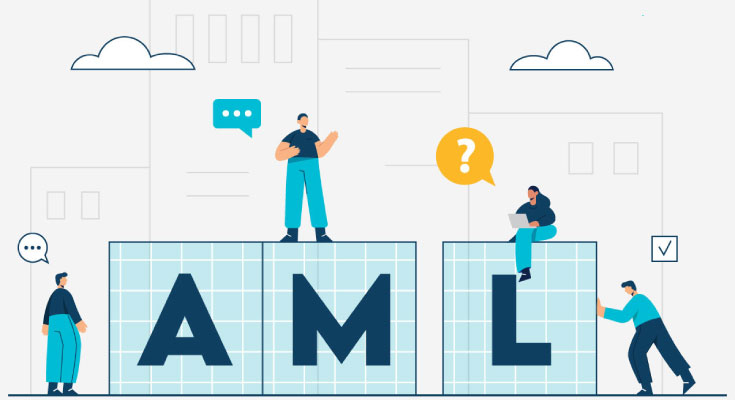Money laundering is a serious global issue that affects governments, businesses, and consumers. Retailers like Walmart handle billions of dollars in transactions each year, making them potential targets for criminals attempting to disguise “dirty money” as legitimate funds. To protect the business and comply with federal regulations, Walmart provides Anti-Money Laundering (AML) training to all relevant associates through its Computer-Based Learning (CBL) modules.
This article explains what Walmart’s AML program is, why it matters, and what associates need to know to complete the training successfully and confidently.
What Is Money Laundering?
Money laundering is the illegal process of taking money obtained from criminal activities—such as drug trafficking, fraud, or corruption—and making it appear legitimate by passing it through legal channels like banks, stores, or online transactions.
The typical process has three stages:
-
Placement: Introducing illicit funds into the financial system (e.g., using cash to buy products or gift cards).
-
Layering: Moving or converting the funds through multiple transactions to hide their origin.
-
Integration: Re-introducing the money into the economy as apparently legitimate income or assets.
Walmart’s Role in Preventing Money Laundering
As one of the world’s largest retailers, Walmart has a responsibility to comply with federal AML laws and cooperate with agencies like the U.S. Department of Treasury’s Financial Crimes Enforcement Network (FinCEN).
Even though Walmart is primarily a retail business, it also provides financial services such as:
-
Money transfers and money orders (via Walmart Money Center)
-
Bill payments and check cashing
-
Prepaid and gift card sales
These services can be exploited by money launderers, which is why Walmart enforces strict anti-money-laundering controls.
Walmart’s Anti-Money Laundering Program
Walmart’s AML program is built on three main components:
-
Training and Awareness:
Associates who handle financial transactions must complete the AML CBL module regularly. It teaches how to recognize suspicious activity and how to report it safely. -
Policies and Procedures:
Walmart has detailed procedures to verify customer identities, record certain transactions, and monitor for unusual behavior. For example, certain money transfers or gift card purchases may require ID verification. -
Reporting and Recordkeeping:
Walmart associates are trained to escalate suspicious activities through internal reporting systems. The compliance team may file a Suspicious Activity Report (SAR) with authorities if needed.
Red Flags of Money Laundering in Retail
The AML CBL module helps employees identify red flags — signs that may indicate illegal activity. Some of these include:
-
Customers making large cash purchases of money orders or gift cards.
-
Splitting a large payment into multiple small transactions (“structuring”).
-
Buying high-value items and returning them quickly for a refund.
-
Reluctance to provide ID or information required by policy.
-
Transactions involving multiple people or third parties for unclear reasons.
-
Requests for unusual refunds or return methods.
Recognizing these red flags is a critical part of compliance and helps prevent Walmart from being used for criminal purposes.
What Associates Should Do
When a Walmart associate notices something suspicious, they should:
-
Stay calm and professional. Never confront the customer directly or accuse them.
-
Follow store policy. Decline requests that violate company rules.
-
Report immediately to a manager or supervisor.
-
Document details such as the date, time, transaction type, and description of the customer’s behavior.
-
Maintain confidentiality. Do not discuss the incident with others unless required by the investigation.
Why AML Compliance Matters
Complying with AML laws protects:
-
Walmart’s reputation as a responsible global retailer.
-
Employees, by ensuring they act within legal and ethical standards.
-
Customers, by maintaining a safe and trustworthy shopping environment.
-
Communities, by preventing criminal networks from benefiting from illegal funds.
Failure to comply with AML regulations can lead to serious penalties, including heavy fines, legal actions, or loss of financial service privileges.
Key Takeaways for Walmart Associates
-
Money laundering disguises illegal funds as legitimate money.
-
Walmart must comply with U.S. AML regulations and train employees accordingly.
-
Associates must identify suspicious activity and report it safely.
-
Never share or guess CBL answers — the purpose of the training is to protect you and the company.
-
Completing the AML CBL honestly builds knowledge that helps keep Walmart compliant and secure.
Conclusion
Walmart’s Anti-Money Laundering (AML) CBL training is not just a corporate requirement—it’s a vital defense against financial crime. By understanding red flags, following reporting procedures, and maintaining awareness, every associate contributes to a safer, more transparent business environment.
Ethical vigilance, proper recordkeeping, and prompt reporting ensure Walmart continues to operate responsibly and in compliance with federal laws.
